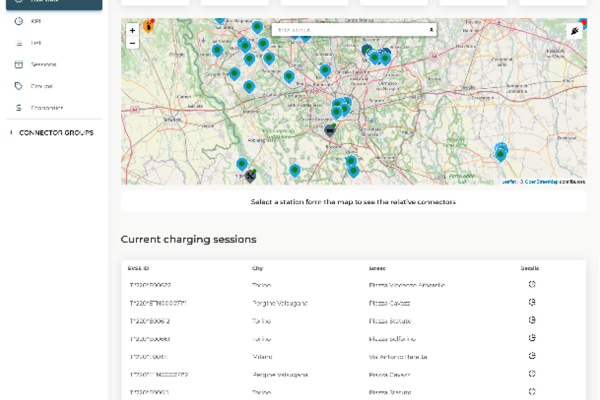Although car ownership affords people a sense of freedom that cannot be met via other means, there can be some frustrations that arise when purchasing a vehicle.
For example, the value of a new car drops by a third as soon as it is driven off a forecourt, which means the car’s value can decrease as much as 60% within three years.
Furthermore, should the vehicle be involved in an accident or be stolen, the insurance will only cover what the car is worth at the time, and this value can decrease while a replacement vehicle is used.
Fortunately, there are solutions available that can help vehicle owners ensure they get the maximum value of their vehicle when claiming insurance, like GAP insurance.
What is GAP Insurance?
GAP is an acronym for Guaranteed Asset Protection and aims to cover the difference between the price paid for a vehicle and its current value. For example, a vehicle purchased for £40,000 that is stolen or written off within the first year may only result in a total loss payout of £35,500.
Those who choose GAP insurance can ensure they receive the total amount, as the vehicle’s original value has been guaranteed.
It should be noted that this is a basic example, and there can be other factors to consider before deciding whether GAP insurance is for you.
Are All Types of GAP Insurance the Same?
Those unfamiliar with GAP insurance may assume that all policies are the same, but this is not the case. The following is an overview of the different types of GAP insurance available.
Return to Invoice GAP Insurance
Also referred to as Back to Invoice GAP Insurance, this type of policy ensures that claimants receive the invoice value of the vehicle following a fire, theft or the car being written off.
Return to Invoice GAP Insurance is available for used and new vehicles, although commonly used when purchasing a new car. A provider may require the vehicle owner to use a registered dealer in some instances, although there can be exceptions.
Those wanting to take advantage of RTI GAP Insurance will need a policy before making a purchase. The timeframe can vary between providers, so using a comparison website can help outlay the available options to ensure you find the right RTI GAP Insurance policy.
Return to Value GAP Insurance
Policyholders can obtain the difference between a total loss payment and the vehicle’s value when purchased.
Also referred to as RTI GAP Insurance, this type of policy can be purchased at any time. However, it should be noted that this type of insurance will only cover the vehicle’s value when the insurance is taken out.
Vehicle Replacement GAP Insurance
This type of GAP insurance covers the difference between the total loss payment and the value of a new car. The details of the policy can vary between different providers, but the cost of a replacement vehicle of the same age and specification will be covered,
Those who have vehicles on hire purchase will often be able to clear the balance using Vehicle Replacement GAP Insurance. Policyholders can also have confidence that any rise in the vehicle’s value will be covered.
Finance GAP Insurance
As the name of the policy suggests, Finance GAP insurance covers any outstanding loans on the vehicle but will not include negative equity.
Negative Equity GAP Insurance
Negative Equity GAP Insurance covers additional costs incurred when more money is borrowed than the car’s value. This type of policy is normally sought by those wanting to carry over a previous debt, although this isn’t possible.
Negative equity is when the value of the car is less than the amount owed. Negative Equity Gap Insurance will pay the difference between the amount owed on a loan and the cost of a new vehicle.
Lease GAP Insurance
This type of GAP insurance allows policyholders to pay off the contract on a lease deal, plus any additional fees that may arise. Although GAP insurance is not a legal requirement for leased vehicles, it could be financially viable should a car be considered a total loss.
Finding the Right Type of GAP Insurance
As there can be a lot of factors to consider when searching for GAP insurance, people will want an easy way of finding the right provider. Using a comparison website can be the perfect way of shortlisting potential providers because it allows people to explore the companies in more detail.
However, it’s important that you don’t just go with the cheapest company because you’ll want to check out their reviews.
For example, Dynamo Cover are a popular provider of GAP insurance and they came up a lot on the comparison sites. They also have great reviews upon Trust Pilot with over 10,000 customer reviews, which is a great sign of a reputable and reliable company.
However, we aren’t going to name any names, but there are certain companies that offer GAP insurance and they certainly don’t have a great reputation.
Therefore our advice is to get quotes upon comparison sites or those that come up on Google, write them down and of course, check out their reviews.
Are There Exclusions That Need to be Considered Regarding GAP Insurance?
Although several forms of GAP insurance can meet the requirements of vehicle owners, there may be some exclusions. Using an insurance comparison website helps you find the perfect insurance provider for your needs.
Some of the standard exclusions regarding GAP insurance are as follows.
- Vehicle owners are on a third-party or third-party fire and theft policy.
- The vehicle is worth over £75,000.
- The car is too old.
- The car has done more than 100,000 miles since the policy was purchased.
- The car is used as a hire vehicle or taxi.
There are other instances where a vehicle may not be suitable for GAP insurance. Modifications like alloy wheels and loud exhausts could also mean the vehicle is not the right fit for GAP insurance.
If you’re still unsure as to whether the GAP insurance policy is suitable, then it can be a good idea to discuss the details with the provider in more detail.








